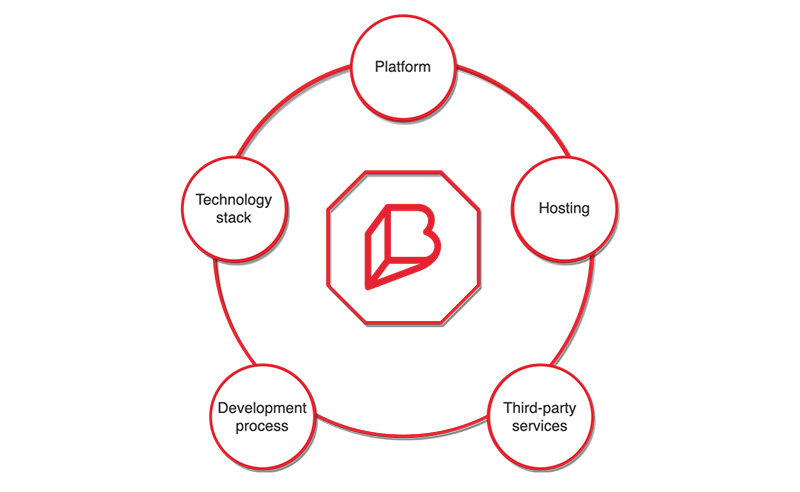

The handover can happen from a freelancer or a software house. The project could be Web, App or AR/VR development no worries the plan is the same for each case. Honestly, the circumstances do not matter that much. Broduction will take your hand and guide you through the process.
In a nutshell, you need to make sure the new vendor has all the necessary information, and the previous developers do not hold back anything and give you the source code, documents and ownership over them.
Sounds easy right? With our checklist below it will be. In the end, you will know the first steps to eliminate any upcoming risk. With a correct audit process that mainly focuses on security and usability issues that the product might have, the new vendor should be ready to ship new features in a week or two. So let's dive in.
For a flawless transition, the incoming team have to understand your product's vision what are your KPIs. They also get to know the technologies behind it. What is already done and working, which development items are in progress and what needs to be done after the takeover?
Feel free to ask your current developers or look into their documentation if needed. For example, if we are talking about a mobile app the following information would be neccasary:

After you make sure, the new developers have the necessary tech stack for your project, you sign a standard NDA. Then they will ask for the resources needed to start the transition.
If the development followed the waterfall model, you need to have a detailed software specification. Otherwise, with the agile approach, you need to have access to correctly written product backlog items (user stories) in a reach.
Naturally, this is the most important and hopefully, the code is well-structured and well-commented. It's best to have both code documentations or readmes with information about frameworks and libraries. The previous vendor should provide all content in English.
Don't worry, if you only have the source code, they can more or less dig up the must-have information, but it is not ideal and could take more time.
The transition can be easier, if the product is covered by automated (integration, controller or unit) tests. On top of that, with working functional or UI tests, they can verify and understand the existing business use-cases.
Your previous team should give you all the assets that were created for your product. They new team need all the design files, prototypes, mockups, 2D/3D models, audio/video/animation resources, product marketing materials, etc.
Provide access to the project's repository, task management system, CI/CD to ensure they get every bit of information for a start as smooth as possible. Other credentials can vary based on the actual product and tech stack, like 3rd party services, but they will have the right questions in place to find out.
This could be the quickest or the longest step of all. Unfortunately, your previous vendor is not always obliged to help the transition.
Let's look at some of the most frequent problems and what are your possibilities to overcome them.
To avoid the process going sideways, they have to act as a calm mediator between the parties. Your previous developers may or may not have the right to ask for money for certain things. We suggest you to read your contract thoroughly, but the new team can also help you decide if it's a fair request or not.
Generally, the client is the sole owner of the completed product and IP. To take full ownership, you just have to notify the previous agency to hand over the list of accounts, credentials for all the services where the project's assets are used or stored. After getting full administrative access, you should review and update all permissions and access for obvious security reasons.
Before jumping into action, the new vendor carefully analyzes the project’s source code and assets, then propose recommended tasks. Our focus will be to find security, stability, scalability issues and to check for possible low-cost dependency upgrades. They also analyze the external service dependencies, CI/CD and hosting solutions. This is to ensure product stability and data protection during the transition.
The new vendor can also help you choose a more efficient project management toolset and suggest ways to make your product even better. After the audit is finished, they send you a report with a list of product backlog items, that are ready to be developed and prioritized by your KPIs. As a result, they will be able to start the work immediately.

On our side the transition runs under close supervision of experienced product managers and software architects. In this way, you can be sure that the transition is smooth and effortless.

Broduction
Do you have a project that needs a new development team? We are transforming ideas into products since 2016 at Broduction. Contact us if you have any questions or want to transition your project to a new vendor!
Let's talk